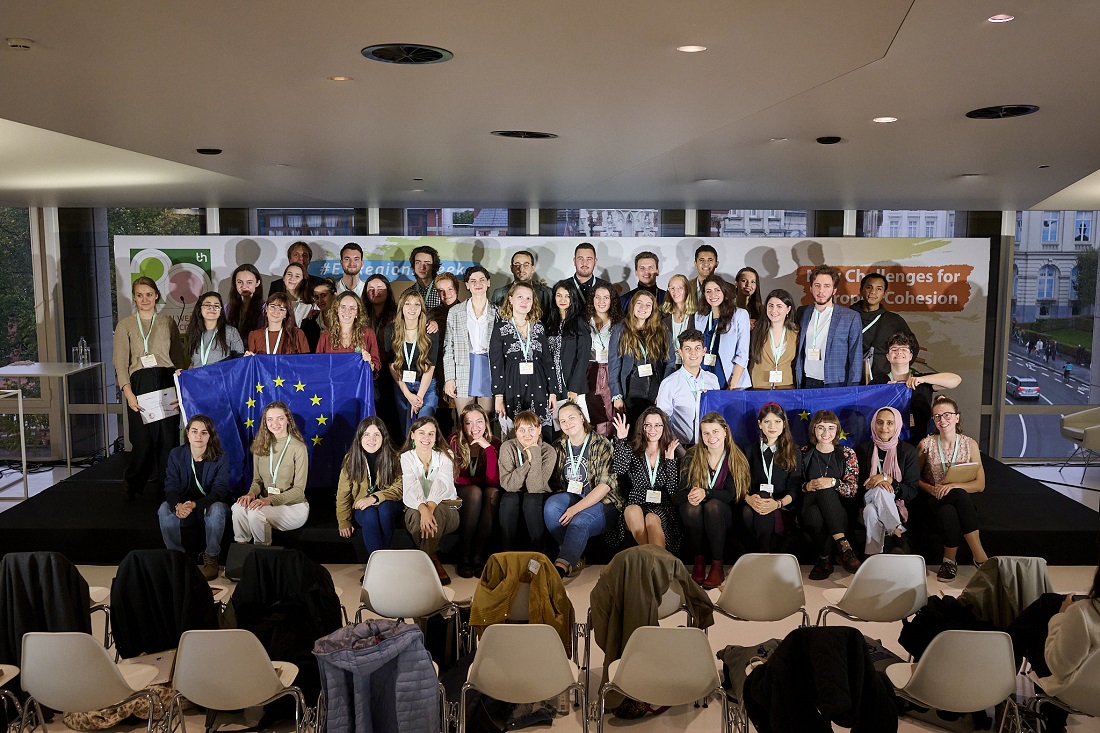Panorama
Citizens don’t understand the EU they are living in. But young journalists can change that
- 18 Jan 2023
This article was written by a young member of the Youth4Regions programme, following her participation in the EU Regions Week, which was held in October this year. She argues that aspiring journalists should explain to citizens, in clear, accessible language, how the EU works and its impact on their lives. In addition, the role of the EU and its institutions needs to be taught in schools.
"During the 20th European Week of Regions and Cities, we either heard elusive words such as cohesion, or metaphoric phrases, for instance “glue of Europe”, floating through the halls of remarkable European Union buildings in Brussels, from the mouth of Commissioner Elisa Ferreira.
Yet such manner of speech isn’t enough to prove to skeptical citizens the importance of the EU. They need to understand concrete actions which influence their everyday lives. I believe that the alumni of the Youth4Regions program can contribute to this.
Although I am critical of the communication of the EU, I am very aware of the extreme difficulty of such a task. I experienced it myself when I returned from Brussels as one of this year’s Youth4Regions alumni and had to face endless questions from my relatives and friends about the experience. I realized how incredibly hard it is to depict such a life-changing event, during which I learned about the complex functionality of the EU, in a few sentences.
Yet I am convinced that this is the main duty of aspiring, young journalists from the EU and beyond. It’s not easy to change the mind of a strong euro-skeptic who could already be caught in the claws of disinformation.
Therefore, we should focus on the younger generation. And journalists like us have an indisputable advantage. After all, we were born with a phone in our hands and grew up surrounded by the almighty internet. We know what is trendy on Instagram or TikTok and we can reach the younger generation in an appealing way.
The biggest challenge is still ahead of us: how to translate the complicated language of the Brussels bubble to an everyday audience. I am quite confident to say that the EU affects the life of every citizen, hence they should understand it well.
After all, the stunning Kohesio website, which was presented to us on the last day of the European Week of Regions by data expert Roberto Musmeci, is proof of that. The Kohesio portal shows an incredible 1.7 million EU-funded projects from all 27 Member States.
The website is a good step for the EU to be more transparent. Anyone can look up any project funded between the 2014-2020 period, discover the budget spent on it and find out who the managing authority is. Searching on the Kohesio portal for a suitable topic to write my article for the application of the Youth4regions program, it was immensely difficult to find something I needed due to the amount of projects, even though I am used to researching such data online on a daily basis.
I am convinced that the EU desperately needs better education about the EU in Member States’ schools. It would help young adults to learn about the institutions and show them how to orient themselves in projects that are implemented in the regions where they live. Frankly, I cannot recall a single hour during my time in high school where we learned about the EU.
As young journalists we need to find a way to simplify the EU’s impact on its people and yet convey all the important facts and details. To some it might sound like a hardly achievable goal. I am aware that the path is going to be rocky and steep. But as I have met so many talented and passionate young journalists in Brussels who are working on projects to make the EU even better, I am sure we are going in the right direction."
- Barbora Novotná

